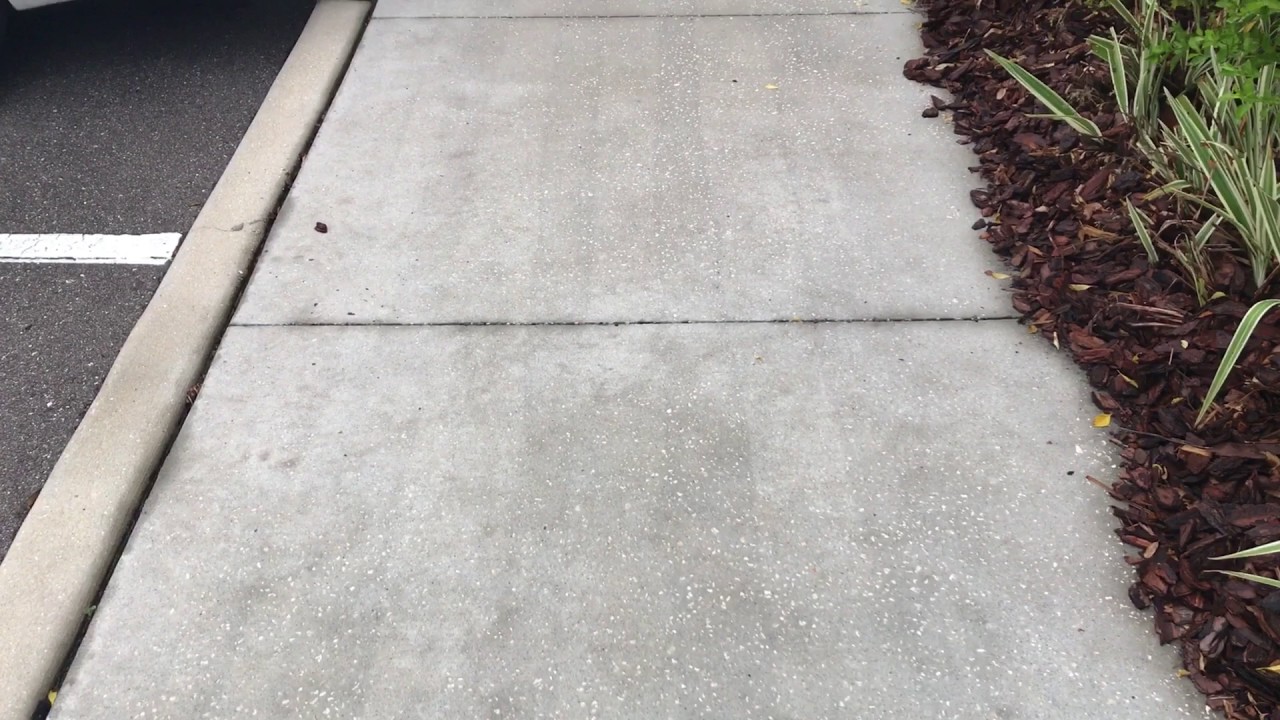
Pressure washing is one of the fastest and most effective ways to clean concrete. But if you’ve ever seen permanent lines or swirl marks on a driveway or sidewalk, you’ve witnessed what happens when etching occurs. 😬
So how do you avoid etching concrete while still getting it clean and looking like new?
In this guide, we’ll walk you through:
- What etching is and why it happens
- How to prevent it when pressure washing
- The right tools, settings, and techniques to use
Let’s keep your concrete clean — without the scars! 🧼💪
❗ What Is Etching in Concrete?
Etching is when the surface of the concrete is worn away unevenly, often due to excessive water pressure or improper technique. It appears as:
- Lines or grooves
- Swirl patterns
- “Tiger striping” or streaking
- Areas that appear permanently rough or discolored
Unlike dirt or algae, etching is permanent and can reduce the life of your concrete surface.
🧠 Why Does Etching Happen?
There are several causes, including:
- Using too high of a PSI (especially above 3000 PSI)
- Holding the pressure washer too close to the surface
- Using a zero-degree nozzle (pencil tip) or small-angle spray
- Moving the wand inconsistently or staying in one spot too long
- Failing to pre-soak or loosen surface dirt before cleaning
Even the toughest concrete can be worn down if pressure is misapplied.
✅ Best Practices to Avoid Etching Concrete
Here’s how to avoid costly surface damage:
1. Choose the Right Pressure Settings ⚙️
- Keep PSI between 2500–3000 for most outdoor concrete
- For newer or decorative concrete, stay closer to 2000 PSI
If your pressure washer is adjustable, start low and work your way up.
2. Use the Right Nozzle 🔫
Always use a 25° or 40° nozzle for concrete.
Avoid 0° or 15°, which concentrate too much force in one area.
The wider the spray angle, the safer it is for your surface.
3. Keep the Wand Moving ➡️⬅️
One of the biggest mistakes is keeping the nozzle pointed at one spot too long.
Use long, sweeping strokes and overlap by 50% as you move across the surface. Never pause the wand in one place — even for a second!
4. Maintain the Right Distance 📏
Keep your nozzle 12–18 inches away from the concrete.
Too close = damage. Too far = not effective.
5. Pre-Soak the Surface 💧
Wet the concrete with a light rinse before washing. This softens dirt, algae, and mold — making cleaning easier and gentler.
6. Use a Surface Cleaner 🌀
If available, use a rotary surface cleaner attachment. These tools keep pressure evenly distributed and reduce the risk of visible stripes or gouging.
They’re especially helpful for large driveways, patios, and sidewalks.
🧴 Should I Use Detergent?
Yes — especially for heavily soiled surfaces. Use:
- Concrete-safe detergent
- Biodegradable cleaners if around plants or lawns
Let the detergent sit for a few minutes before rinsing. This reduces the need for high pressure and scrubbing.
Browse Amazon Here For Biodegradable Pressure Washing Detergents
🧰 What If Etching Has Already Happened?
If etching has already occurred, your options include:
- Concrete resurfacing
- Acid staining or coloring to mask marks
- Power troweling or polishing (for smoother finishes)
While you can’t “undo” etching, these fixes can restore the look of your concrete.
🚧 Etching vs. Staining: Know the Difference
Don’t confuse surface etching with discoloration or oil stains.
- Stains can often be removed
- Etching means the physical surface has been worn away
If you’re unsure, run your fingers across the marks. Etching feels rough or uneven; stains do not.
🏁 Final Thoughts
Pressure washing is a great way to keep your concrete looking fresh — but it comes with responsibility. Use the right tools, don’t rush the job, and always prioritize control over power.
By following these steps, you’ll get a clean, bright concrete surface without leaving permanent marks behind. 🧱💦✅
Browse Amazon Here For Top Rated Power Washers And Accessories






